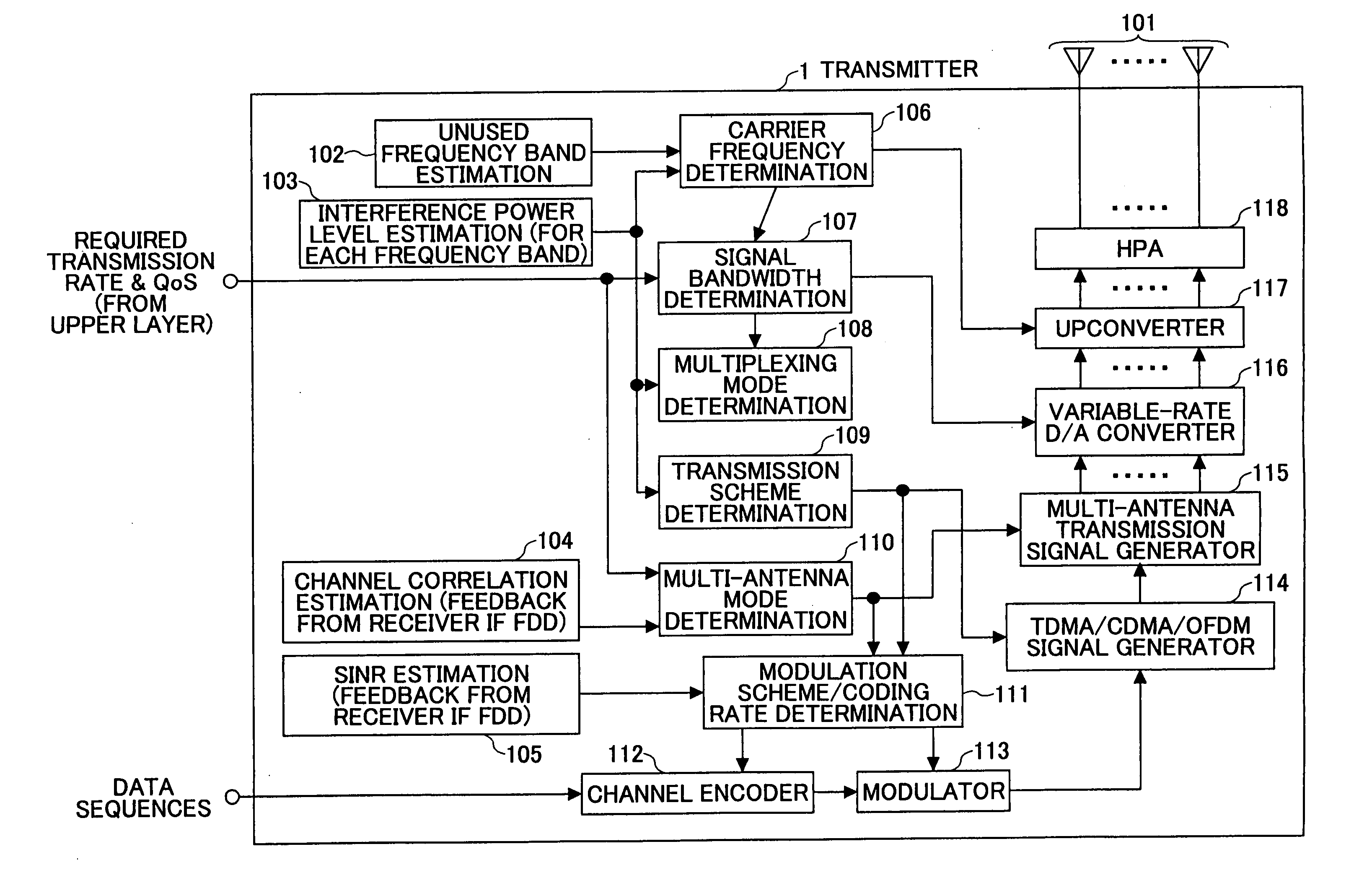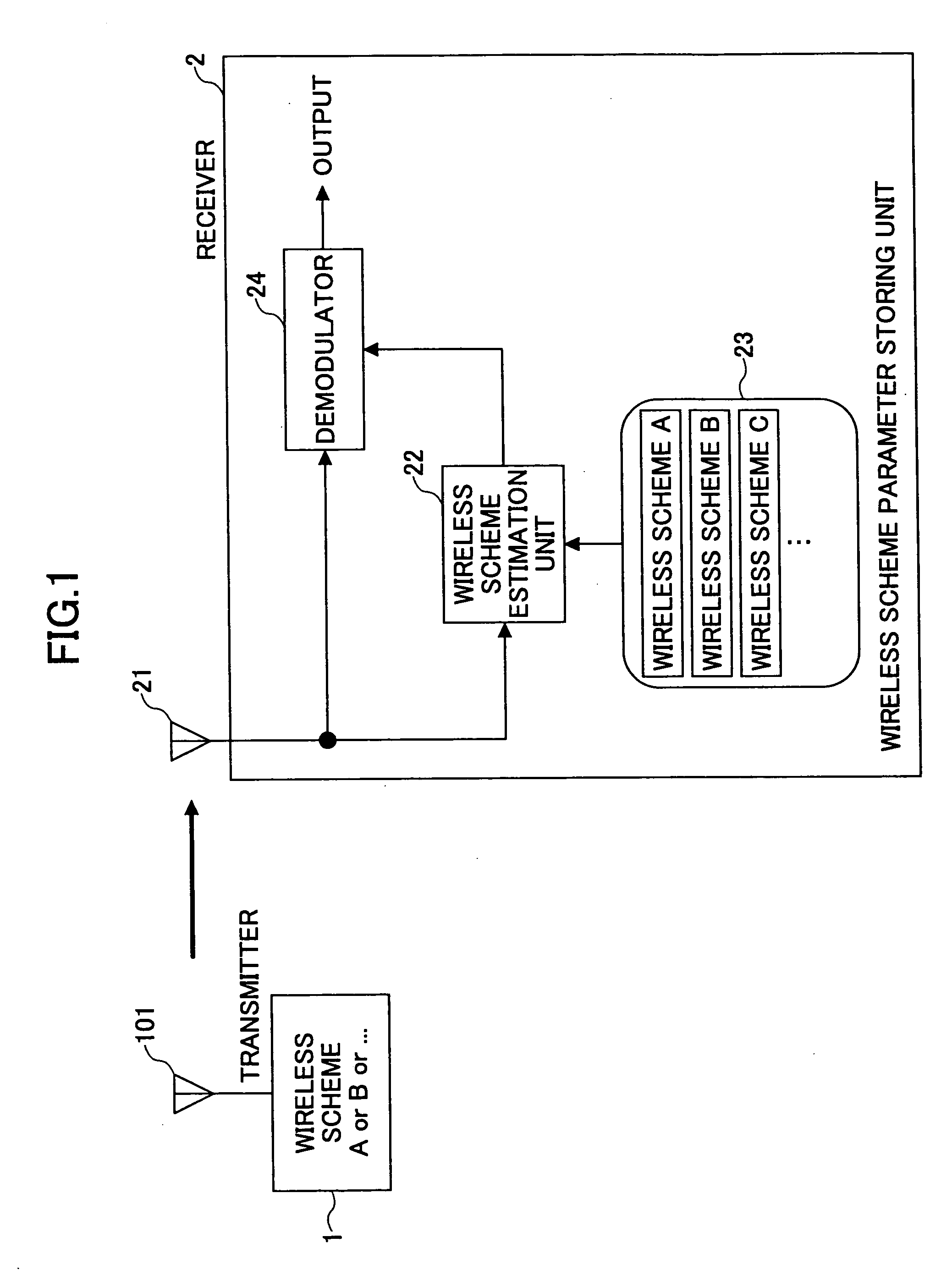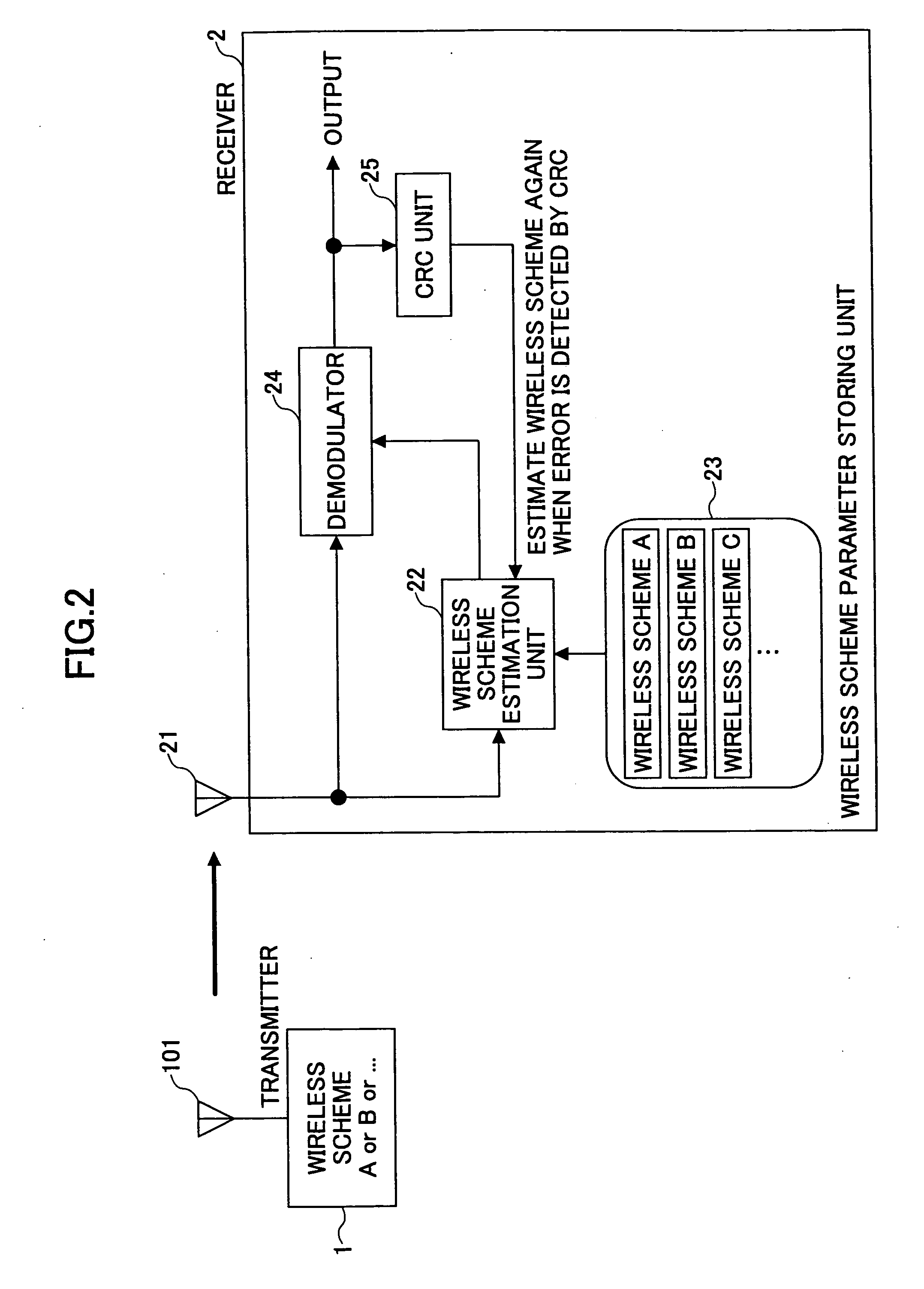Mobile communication receiver and transmitter
- Summary
- Abstract
- Description
- Claims
- Application Information
AI Technical Summary
Benefits of technology
Problems solved by technology
Method used
Image
Examples
first embodiment
[0041]FIG. 1 is a schematic diagram illustrating examples of a transmitter 1 and a receiver 2 according to the first embodiment of the invention. The transmitter 1 has an antenna 101, and it selects an appropriate wireless scheme from multiple wireless schemes (A, B, and some more) to transmit a signal. The receiver 2 has an antenna 21, a wireless scheme estimation unit 22 for estimating the wireless scheme based on the signal received at the antenna 21, a wireless scheme parameter storing unit 23 for storing wireless parameters for each of the wireless schemes (A, B, . . . ), and a demodulator 24 for demodulating the received signal based on the estimated wireless scheme.
[0042] The transmitter 1 changes the wireless schemes according to the currently required transmission rate, quality of services (QoS) including channel quality, and the propagation environment. The parameters defining the wireless schemes includes:
(1) center carrier frequency;
(2) signal bandwidth;
(3) multip...
second embodiment
[0054]FIG. 2 is a schematic diagram illustrating a transmitter 1 and a receiver 2 according to the second embodiment of the invention. In this embodiment, a CRC unit 25 is added to the receiver 2 to detect an error in demodulation result by cyclic redundancy check.
[0055] Similar to the first embodiment, the wireless scheme estimation unit 22 of the receiver 2 estimates the currently used parameters of the wireless schemes by selecting the parameters most likely to be used by the transmitter 1 for the respective wireless schemes from the wireless scheme parameter storing unit 23. The demodulator 24 demodulates the received data based on the selected wireless schemes. Then, the CRC unit 25 checks whether the demodulated data contain any error. If an error is detected, the wireless scheme estimation unit 22 estimates a set of wireless schemes again. To be more precise, the second most likely wireless parameter set, other than the previously selected one, is selected from the wireless ...
third embodiment
[0056]FIG. 3 is a schematic diagram illustrating transmitters 1 and a receiver 2 according to the third embodiment of the invention. In the third embodiment, a second wireless scheme estimation unit (an interference signal wireless scheme estimation unit) 22b is added to the structure shown in FIG. 1 to estimate the wireless transmission scheme of an interfering transmitter 1b. An interference canceller 26 is also added to cancel the interference signal from the received signal. The first wireless scheme estimation unit 22a that estimates the wireless schemes currently used by the target transmitter 1a corresponds to the wireless scheme estimation unit 22 shown in FIG. 1, and the desired signal demodulator 24a corresponds to the demodulator 24 shown in FIG. 1.
[0057] In operation, the first wireless scheme estimation unit 22a estimates the wireless schemes selected by the target transmitter 1a based on the received signal. The second wireless scheme estimation unit 22b estimates the...
PUM
 Login to View More
Login to View More Abstract
Description
Claims
Application Information
 Login to View More
Login to View More - R&D
- Intellectual Property
- Life Sciences
- Materials
- Tech Scout
- Unparalleled Data Quality
- Higher Quality Content
- 60% Fewer Hallucinations
Browse by: Latest US Patents, China's latest patents, Technical Efficacy Thesaurus, Application Domain, Technology Topic, Popular Technical Reports.
© 2025 PatSnap. All rights reserved.Legal|Privacy policy|Modern Slavery Act Transparency Statement|Sitemap|About US| Contact US: help@patsnap.com



